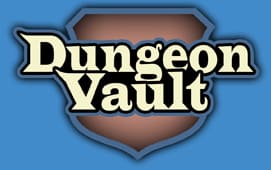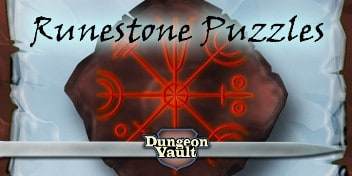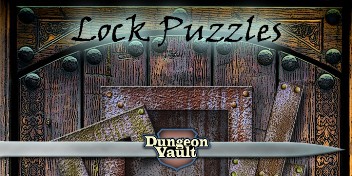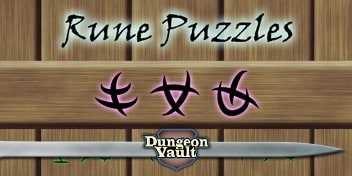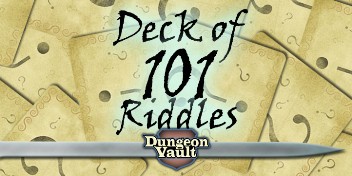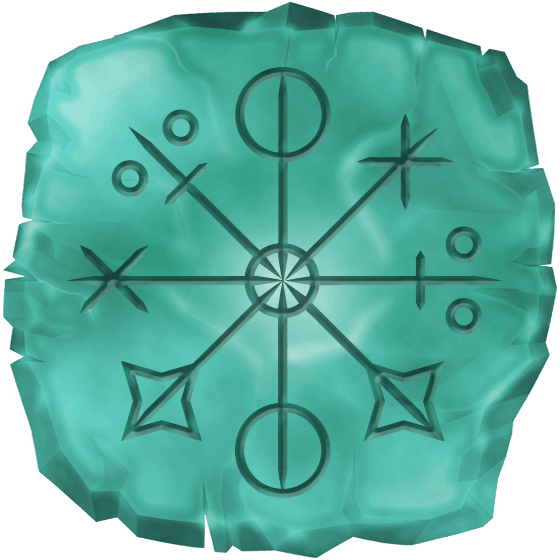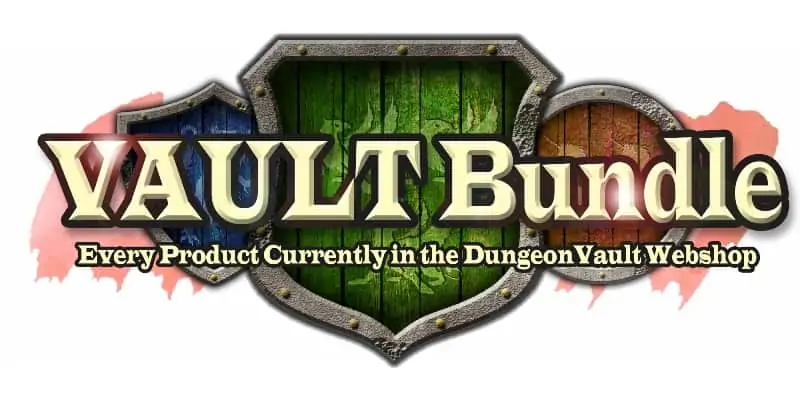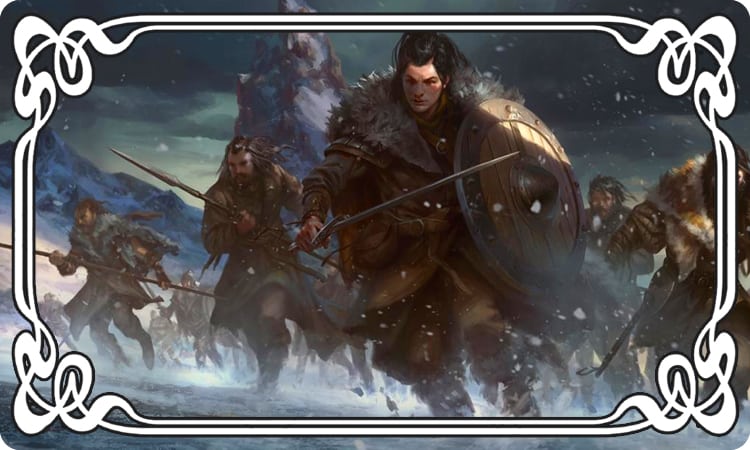
Running a D&D puzzle can be challenging, and running a large group can also be difficult. To do both well simultaneously is no small feat. But these tips will make it a LOT easier!
Here are my top tips for running puzzles for large groups in a fun and easy way:
1. Engage Everyone
One of the biggest drawbacks of DMing a large group is that players have to wait for their turn. This holds true for a lot of challenges like combat, buying goods, and with social interaction.
But a benefit of using puzzles for a large group of players is that every player can be engaged throughout. There is no waiting for your turn. Players can actively participate throughout the challenge. Here’s how:
2. Use Cooperative Puzzles for Large Groups
When you introduce the puzzle everyone listens to your explanation at once. So no time lost there. Next, you give players the puzzle pieces of which there should be many. In fact, I recommend always having more puzzle pieces than you have players. This gives everyone a chance to grab a piece and start puzzling.
Good types of puzzles for this kind of setup are Runestone Puzzles and Lock Puzzles. Both puzzle packs offer enough puzzle pieces for a group of any size. And with every player grabbing pieces of the puzzle they will have to cooperate to put it all together.
All that communicating back and forth means everyone is engaged. Another benefit is that these types of puzzles do not get easier just because there are more players. On the contrary, having more players who have to coordinate their actions adds difficulty.
I’m sure you’ve noticed how a large party can take out strong monsters easily. And finding really difficult combat challenges can push DMs to their limits as each PC unloads their special abilities on your villain. Not so with puzzles, the more players you have the more they tend to get in each other’s way. And managing themselves effectively as a group becomes a part of the puzzle challenge.
The trick is to not feel too responsible here. Sit back, and let them figure it out. If anyone complains I tell players that working together as a team is certainly part of this challenge and XP will be rewarded accordingly. If you have a shy player in your group or players that tend to shout over others, inform players that they should include everyone and that this will also count towards their XP reward. Setting expectations before a challenge is a lot easier than correcting players during a challenge.
Also, according to our survey players like cooperative puzzles almost better than any type of puzzle. Players want to work together but sometimes need a reminder in the rush of trying to solve a challenge.
3. Single Image Puzzles for Large Groups
Other types of puzzles that work well with large groups are Rune Puzzles and Riddles. These puzzles are just one image that everyone can see simultaneously. This avoids one player hogging the image while the rest wait. With a single image the DM can prop up against their DM screen everyone can start puzzling.
With this setup players can decide to work together or to go it alone. Some groups will be more competitive and other more cooperative. It’s a great way to see what your group prefers. Of course while some groups enjoy a competitive aspect, others are drawn to D&D because of its cooperative game play. As a DM you can guide the conversation so everyone can join in. For instance:
The Deck of 101 Riddles is a system where the players need to find two words that mean something on their own or form an expression, like: fireball, fool’s gold or touch wood.

Each riddle puzzle contains two cryptic lines which describe the two words. Different words for ‘sack’ could be: bag, carryall, purse, etc. A ‘tobacco-burner’ could be a: cigarette, pipe, cigar, etc.
| First word | Second word |
| Bag Carryall Purse | Cigarette Pipe Cigar |
On their own cryptic words have many meanings, but combine two words and there can only be one correct answer. For instance, while ‘purse’ and ‘cigar’ are both options, no one’s ever heard a purse-cigar. But ‘bag’ and ‘pipe’ do make up the combined word bagpipe. There is only one correct answer to each riddle.
If you want players to work together in finding the solution, you could lead the conversation by revealing the first word ‘sack’. Then, you ask everyone to think of synonyms for sack and you write those down. Next, you do the same for the second word and fill out the second column.
Only when the players have completed both columns do you prop up the sheet with both columns filled out. This way all players can start making every possible combination of words to arrive at the answer. When you guide the players through the steps of this puzzle, you it becomes much easier to include everyone at the table.
4. Make Your Puzzles Impassable by Magic or Destruction
Puzzles have a ton of benefits but a big drawback is that they can be bypassed through magic, divination, or just simply blowing up the door you placed the puzzle on. With more players at the table, chances of someone finding a way to circumvent your entire puzzle increase exponentially. So how do you deal with this.
The first thing that comes to mind might be anti-magic fields, impossibly high saving throws, and so on. And these will work. But they can make players feel like they are being railroaded. There is a much simpler solution.

Simply state that the magical (or mechanical effect) will only occur if the puzzle is solved correctly. So the magical portal will only open when the rune puzzle is solved. This is also a complete railroad, but because your counter measure isn’t as obvious players will accept it as a natural part of the story.
That leaves divination spells, the thorn in any DM’s foot! The nail in our coffin!!! The dwarf at our diner party!!!! Divination can mess up your plans like nothing else, but I have a solution in the next paragraph.
5. Use Puzzles That Challenge Players and Their Characters
A common critique of puzzles is that they only challenge the players and not their characters. That is simply not true. When done correctly, puzzles challenge BOTH the players AND the characters.
And this holds true for any challenge in D&D. A combat challenge isn’t just about rolling the dice which challenges the character. A players will still have to make all the tactical decisions like when to duck for cover or when to rush in. Both are crucial.
With puzzles you want the players’ solutions and their characters’ abilities and powers to matter. So if a character casts a divination spell when solving a puzzle, let them! A success simply means they have now solved a small piece of the puzzle. But you never give away the whole puzzle.
So with the riddle example a successful divination spell might reveal that the word ‘Purse’ in the first column and the word ‘Cigar’ in the second column are incorrect. This narrows it down, but doesn’t give everything away.
You can do the same for successful skill or intelligence checks. Of course, this will only work if you use puzzles that have a lot of steps of puzzle pieces to them. I always try to design puzzles with many pieces for this very reason. They just work better with RPGs.
6. Players That Don’t Like Puzzles
Puzzles are great at keeping everyone engaged throughout the challenge. But what do you do with players who simply do not enjoy puzzles?
First of all, there are players who don’t enjoy social encounters, combat, or any other type of challenge. And for the good of the group they suck it up until a challenge they enjoy more comes along. A good DM offers a variety of challenges so there is something for everyone and I don’t see why puzzles should be any different.
Secondly, you can very easily combine different challenges with a puzzle for larger parties. So maybe you have a couple of players who just want to hack and slash. Just send an endless horde of zombies toward the party while they are trying to solve the puzzle. Now, half the party will probably defend against the zombies while a couple of players focus on the puzzle and everyone gets to do what they enjoy most.
Running two challenges simultaneously is very difficult with other types of challenges. But with puzzles you can. It’s just one of the many reasons using puzzles in D&D is so much fun.
In this article I used a couple of premade illustrated puzzles as examples. You can get all of these puzzles and a lot more in the Vault Bundle. There are literally more premade puzzles than you’ll know what to do with. Prep work for large groups is time consuming and nothing more so than designing puzzles. With the Vault bundle it will be easy sailing.
By Paul Camp
Image credit: Magic the Gathering
